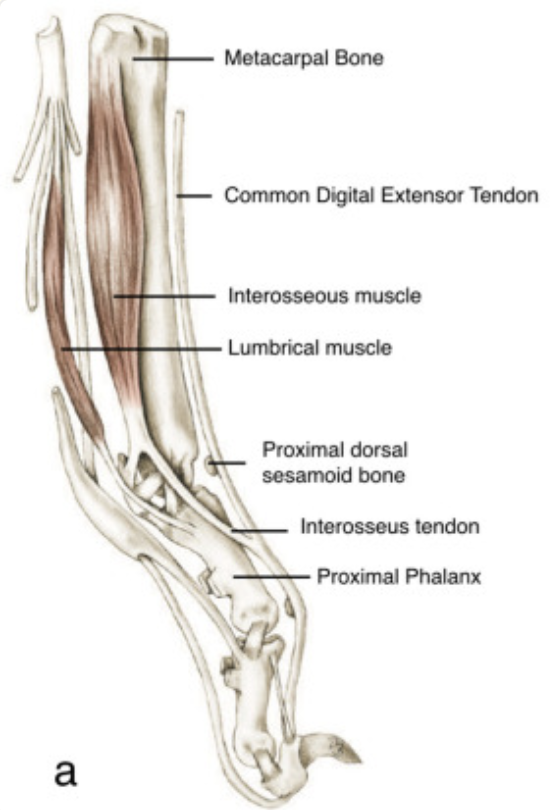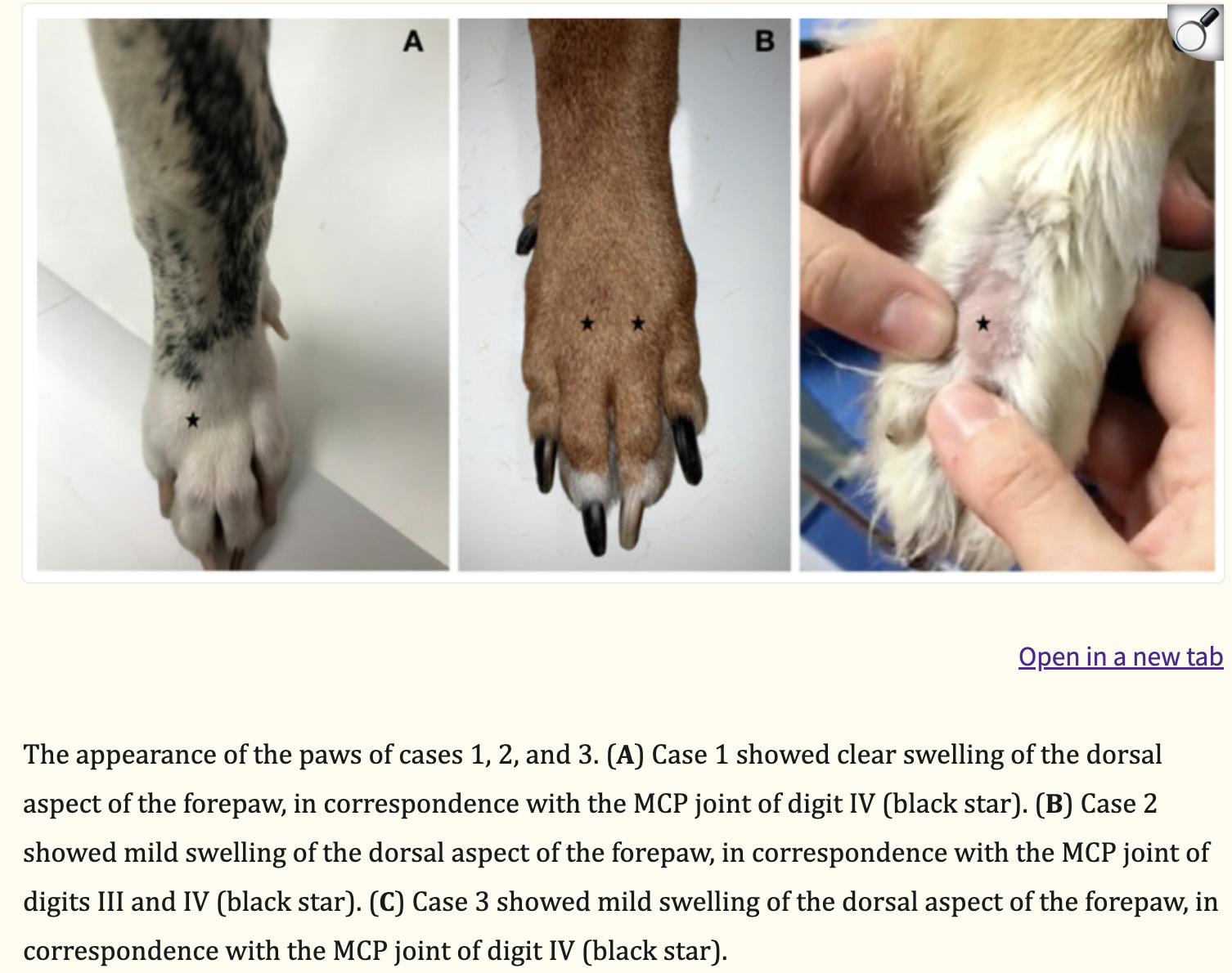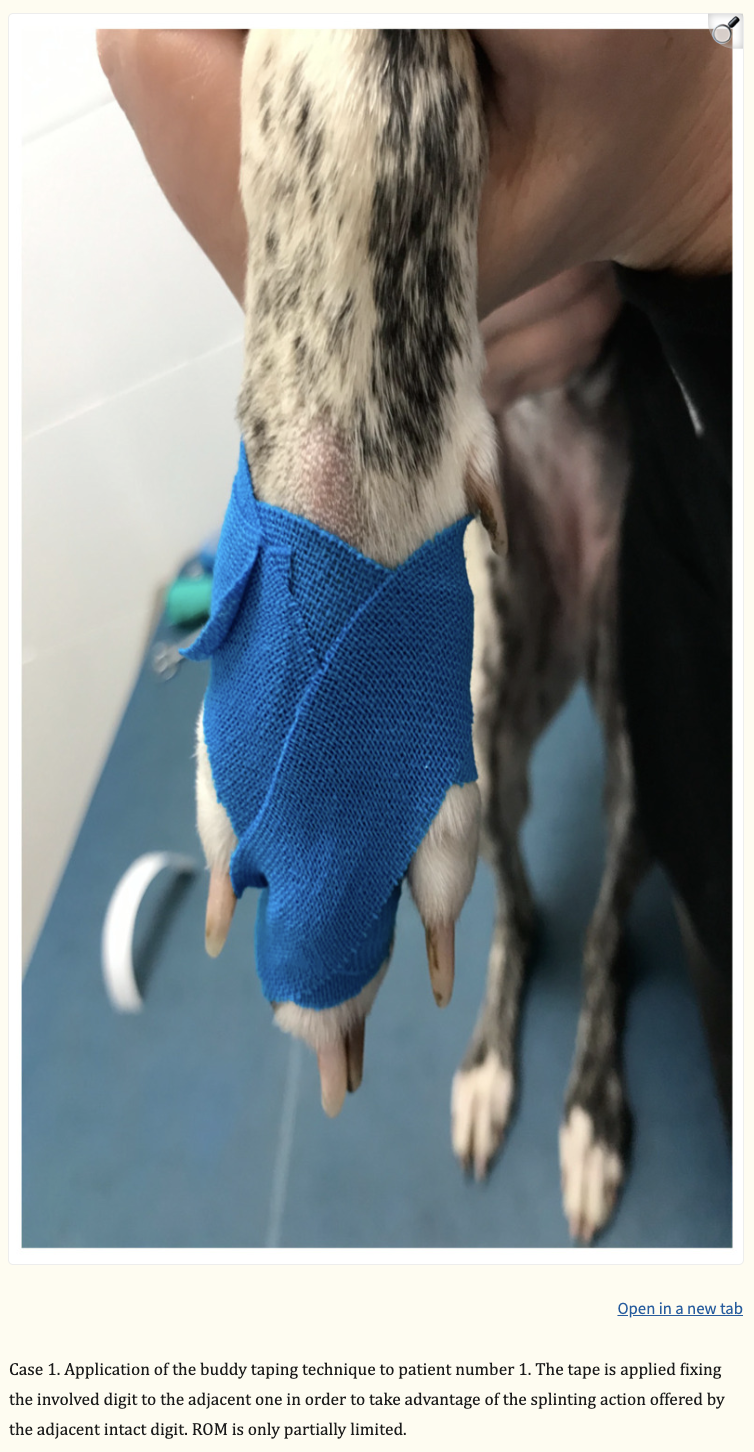Laurie's Blogs.

Dec 2024
Boxer’s Knuckles in Dogs
Have you heard of Boxer’s Knuckles? I have to admit, I had never heard of it. I guess, I never treated any Boxers when I was treating people. According to the Orlando Hand Surgery Associates1, it is defined as follows:
"Boxer’s Knuckle is an injury that affects the structures around the first knuckle, specifically the metacarpophalangeal joint (MPJ). This condition commonly involves damage to: Skin; Extensor tendon; Ligaments; Joint cartilage and; Metacarpal head bone. Repeated impacts to the extensor tendon over the knuckle can lead to Hypertrophic Interstitial Tendonosis (HIT Syndrome). An off-center hit can tear the sagittal bands, causing the extensor tendon to slip off the knuckle and lie between them. These ligament tears result in joint instability."
Did you know that Common Digital Extensor Tendon (CDET) injury has been reported in dogs, with a similar pathology as described in human athletes with boxer’s knuckles? Well, it has!
Franini and Grazia Entani (2022) presented a case series of three dogs with common digital extensor tendon injuries.
First, let’s remember our anatomy:
“The common digital extensor muscle arises on the lateral epicondyle and runs distally, passing through the lateral distal sulcus of the radius. Its distal CDET divides into four distinct tendons, progressing distally after crossing the dorsal surface of the carpal joint. Each tendon, from digit II to digit V, glides on the roll-like dorsal part of the corresponding metacarpal bones and is deeply embedded in the fibrous tissue of the digits. A sesamoid bone, not present in all dogs, is embedded in the tendon at the level of the MCP joint. At the distal end of the proximal phalanx, each tendon bilaterally receives a thin extension of the tendon of insertions of the interosseous muscles that crosses obliquely from the palmar surface.”2

The case series goes on to describe a 17-month old Whippet that suffered a blunt trauma while lure-coursing on uneven terrain, a 6-year old Rhodesian Ridgeback with a history of blunt trauma to the foot against a root found on the racetrack when competing in canicross, and an 8-year old Shetland Sheepdog that experienced a trauma involving a tunnel approached when competing in agility.
On examination, all dogs had swelling on the dorsal aspect of the MCP joint of digit IV, and with pain at palpation of the swollen region. No abnormalities were detected on radiographs in any of the dogs. Each dog displayed some degree disruption of the peritendinous fibrous tissue upon ultrasonic examination. No luxation or subluxation of the tendons was noted in the Whipped or Rhodesian Ridgeback, however the Sheltie experienced a medial tendon shift with complete flexion of the joint.

Treatment was also interesting for these cases. “A conservative approach was chosen as the treatment option for all three cases. The involved digit was immobilized in extension for four weeks using a “buddy taping” technique, according to previously published literature [9]. In the first four weeks, rest and leash walk were prescribed. After that, free walks were allowed twice a day for four weeks. Sharp turns and fast running were avoided, and passive range of motion associated with proprioceptive exercises was suggested.”2 At 8-weeks post intervention, the dogs were examined to be ‘normal’, and by 3 months, all of the dogs were back to their respective sport without re-injuries.

Conclusions:
This paper appears to be the first to describe this injury in dogs. This small case series suggests to consider lesions to the CDET at the level of MCP joints among the differential diagnosis of thoracic limb lameness in canine sporting patients involved in sports that are prone to blunt trauma.
The End:
On that note, I hope everyone learned something! I know I did!
References:
1. OHSA. Aug 28, 2024. Understanding Boxer’s Knuckle: Causes, Symptoms, and Treatment Options. Accessed Dec 22, 2024. (https://orlandohandsurgery.com/understanding-boxers-knuckle-causes-symptoms-and-treatment-options/).
2. Franini A, Entani MG. Common Digital Extensor Tendon Injury in Three Sporting Dogs. Animals (Basel). 2022 Sep 29;12(19):2619.

